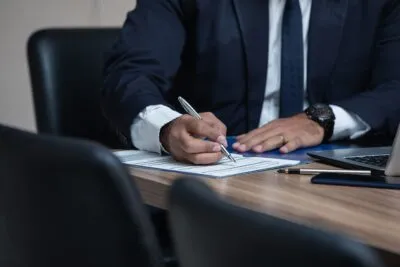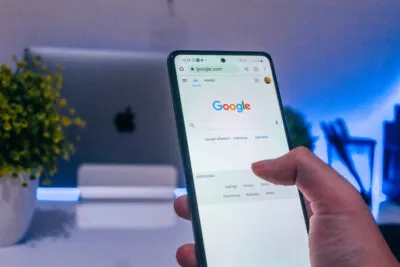
- Originally Published on June 28, 2024
The Elements of Copyright Infringement: Proving Your Case in Court
You poured your heart and soul into creating your masterpiece. But now, you’ve discovered that someone else has copied it without your permission and is profiting from your hard work. To enforce your rights, you need to prove copyright infringement in court. But what does that entail?
To win a copyright infringement lawsuit, you’ll need to establish two key elements: ownership of a valid copyright and unauthorized copying by the defendant. As an attorney with over a decade of experience dealing with copyright infringement claims, I’ve seen firsthand how the strength of your evidence on these elements can make or break your case.
In this article, I’ll explain exactly what you must prove for each element and share practical insights from real-world cases so you’ll be better prepared to protect your creative works and vindicate your rights in court.
What Are the Grounds for Copyright Infringement?
To prove copyright infringement, a plaintiff must show:
- Ownership of a valid copyright
- The defendant copied original elements without permission
Ownership requires an original work fixed in a tangible medium. Copying is shown through access and substantial similarity of protected expression.
What is Copyright Infringement?
Copyright infringement occurs when someone uses a protected work without the owner’s permission in a way that violates any of the exclusive rights granted by copyright law. This can include reproducing the work, creating derivative works, distributing copies, or publicly performing or displaying the work. Copyright infringement litigation aims to enforce those exclusive rights and remedy unauthorized uses. With statutory damages of up to $150,000 per work for willful infringement, the stakes in these lawsuits can be substantial.
Element 1: Ownership of a Valid Copyright
To claim copyright infringement, a plaintiff must first prove they own a valid copyright in the work. Ownership has two key components: originality and fixation.
Originality means the work must be independently created and possess at least a minimal degree of creativity. This is a low bar – even a small spark of creativity can suffice. However, facts, ideas, and other elements in the public domain are not protected.
Fixation requires that the work be captured in a tangible medium, such as paper, film, or a digital file. This could be a book, photograph, sculpture, or computer program. It’s not enough to have an idea in your head – it must be recorded in some stable, permanent form.
Ownership generally vests initially in the creator of the work. However, copyrights can be transferred through written agreements like assignments or work-for-hire contracts. Registering the work with the U.S. Copyright Office is not technically required, but it does create a presumption of validity that can be powerful evidence in court.
- Originality = low threshold, but facts and ideas not protected
- Fixation = captured in a tangible medium
- Ownership vests in creator unless transferred
- Registration presumes validity
Element 2: Copying of Original Elements
The second crucial element is proving the defendant actually copied protected material from the plaintiff’s work without authorization. Copying can be shown through either direct evidence or circumstantial evidence.
Direct evidence of copying is rare. Far more often, plaintiffs rely on circumstantial evidence in the form of access plus substantial similarity. Access means the defendant had a reasonable opportunity to view the plaintiff’s work. Substantial similarity means the works share protected expression, not just unprotected elements like ideas or scènes à faire.
Access can be proven by showing that the plaintiff’s work was widely disseminated or that the defendant encountered it through a chain of events, such as working in the same industry. In the digital age, access is often assumed.
Courts assess substantial similarity using a variety of tests to filter out unprotected elements and determine if the “total concept and feel” of the works is similar to an ordinary observer. The focus is on protected expression – even identical ideas will not establish infringement if expressed differently.
Critically, a plaintiff must show actual copying, not just striking similarity. If the defendant independently created a similar work without knowledge of the plaintiff’s work, there’s no infringement, even if the works are virtually identical.
- Direct evidence or access + substantial similarity
- Access = reasonable possibility of viewing work
- Substantial similarity of protected expression, not ideas
- Actual copying, not independent creation
The Idea-Expression Dichotomy
One of the most essential principles in copyright law is the idea-expression dichotomy. This doctrine holds that copyright protection extends only to the particular way an author expresses an idea, not the underlying idea itself. Ideas, facts, and other elements in the public domain are free for anyone to use; the unique expression is protected.
For example, the basic plot of star-crossed lovers facing family opposition is an unprotected idea. However, the specific dialogue, characters, and storyline of Shakespeare’s Romeo and Juliet is protected expression. Similarly, the general concept of a wizard school is not copyrightable, but the particular details of Hogwarts in the Harry Potter series are.
Courts have also applied this doctrine to functional elements of software code, historical facts in nonfiction works, and stock characters in literature and film. The goal is to prevent monopolies on ideas while still incentivizing creative expression. When analyzing copying, courts must filter out unprotected ideas from protected expression.
Proving Copying with Circumstantial Evidence
Because direct proof of copying is uncommon, plaintiffs frequently rely on circumstantial evidence of access and substantial similarity. Some courts apply the “inverse ratio rule,” holding that the stronger the evidence of access, the less similarity is needed to infer copying (and vice versa).
However, the internet age has complicated the access analysis. With many works freely accessible online, courts often assume access and focus more on substantial similarity. Plaintiffs can still show access through widespread dissemination of their work or a chain of events linking it to the defendant.
To assess substantial similarity, courts typically use a two-part test. First, an “extrinsic” analysis objectively filters out unprotected elements like ideas, facts, and scènes à faire (stock expressions). Then, an “intrinsic” analysis subjectively compares the works’ protected expressions to determine if an ordinary observer would find them substantially similar. Some courts also consider factors like the quantitative and qualitative significance of the portions copied.
Even if the works are substantially similar, a plaintiff must prove actual copying rather than independent creation. Defendants can rebut an inference of copying by showing they created their work without any knowledge of the plaintiff’s work, even if the result is strikingly similar.
Willful Infringement and Damages
While not a strict element of an infringement claim, a defendant’s willfulness can significantly impact the damages available. Willful infringement means the defendant knew their actions constituted infringement or acted with reckless disregard for the plaintiff’s rights.
Plaintiffs can show willfulness through evidence like cease and desist letters, continued sales after notice of infringement, or attempts to conceal infringing activity. If proven, willful infringement can result in enhanced statutory damages of up to $150,000 per work (compared to $30,000 for non-willful infringement).
Minc Law Can Advocate For You And Your Protected Works
Copyright infringement litigation can be complex and daunting, especially for those not well-versed in the nuances of the law. But by understanding the key elements of ownership and copying, you’ll be better equipped to assess your claims and advocate for your rights in court.
The strength of your evidence on originality, fixation, access, and substantial similarity can dictate the outcome of your case. That’s why it’s so important to work with experienced copyright counsel who can help you gather the right proof and present a compelling narrative to the judge or jury.
At Minc Law, we’ve helped countless clients enforce their copyrights and achieve successful results in high-stakes infringement lawsuits. Our battle-tested litigation strategies are grounded in a deep understanding of the legal elements and how they play out in real-world cases.
If you have questions about a potential copyright claim or need help responding to infringement, we’re here to help. Contact us today to schedule a consultation with one of our nationally-recognized internet attorneys. Together, we can protect your creative assets and position you for a successful outcome.
Get Your Free Case Review
Fill out the form below, and our team will review your information to discuss the best options for your situation.
This page has been peer-reviewed, fact-checked, and edited by qualified attorneys to ensure substantive accuracy and coverage.




